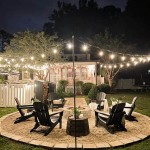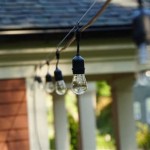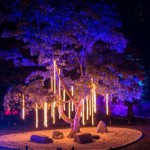Low Voltage Outdoor Lighting Design: Essential Aspects
Low voltage outdoor lighting is a safe, versatile, and energy-efficient way to illuminate your outdoor space. When designing a low voltage lighting system, there are several essential aspects to consider to ensure a functional and aesthetically pleasing result.
1. Purpose and Placement
Determine the purpose of your outdoor lighting, whether it's for security, ambiance, or accentuating specific features. This will influence the placement, type, and brightness of the fixtures. Consider walkways, entrances, landscaping, and areas where additional illumination is needed.
2. Power Source and Transformer
Low voltage lighting systems require a transformer to convert standard voltage to a lower voltage, usually 12 or 24 volts. Select a transformer with sufficient wattage to handle the total load of the fixtures you plan to use. The transformer should be waterproof and buried underground or placed in a weatherproof enclosure.
3. Fixture Selection
Choose fixtures that complement the style of your home and outdoor space. Consider path lights, spotlights, bollards, and step lights. Pay attention to the material, finish, and beam angle to create the desired effect. High-quality fixtures will withstand weather conditions and provide long-lasting performance.
4. Wiring and Installation
Use low voltage wires rated for outdoor use. Direct burial or conduit installation is recommended for safety and durability. Follow the manufacturer's instructions for proper wiring and connections. Use waterproof connectors and seal any exposed wires to prevent moisture penetration.
5. Control Options
Consider automated control options such as timers, photocells, or motion sensors. Timers allow you to set specific lighting schedules, while photocells respond to changes in light levels, automatically turning on the lights at dusk and off at dawn. Motion sensors provide additional security and convenience by triggering lights when movement is detected.
6. Safety Considerations
Electrical safety is crucial. Ensure all electrical components are rated for outdoor use and meet industry standards. Use ground fault circuit interrupters (GFCIs) to protect against electrical hazards. Avoid overloading the transformer and keep wires away from water and other hazards.
7. Maintenance and Troubleshooting
Regular maintenance is essential for optimal performance. Clean fixtures regularly to remove dirt and debris. Replace burned-out bulbs promptly. If any issues arise, check the wiring, connections, and transformer. Refer to the manufacturer's instructions for troubleshooting guidance.
Conclusion
Low voltage outdoor lighting can enhance the beauty, safety, and functionality of your outdoor space. By considering the essential aspects discussed above, you can create a well-designed and effective lighting system that meets your specific needs and enhances the ambiance and curb appeal of your property.

Low Voltage Landscape Lighting O Grady S Sterling Va

Illuminate Your Deck Patio Or Garden With Low Voltage Outdoor Lighting Sposato Irrigation

Low Voltage Outdoor Lighting In The Fox Cities Wisconsin

Low Voltage Outdoor Lighting In 2024 Design Landscape

Low Voltage Landscape Lighting Adds Charm Borst Design

Diy Low Voltage Landscape Lighting Ideas

Landscape Lighting Installation In Wichita Low Voltage Led

Low Voltage Landscape Lighting Garden Light Led

Preferred Properties Landscaping Masonry Outdoor Lighting Landscape Exterior

Low Voltage Outdoor Lighting Landscaping Network







